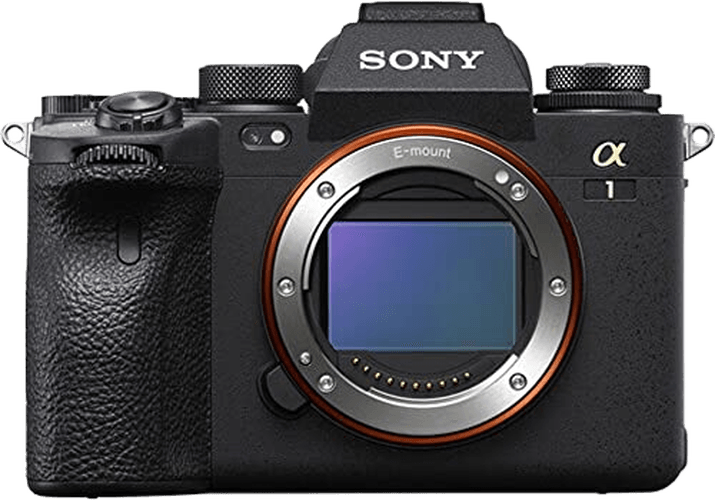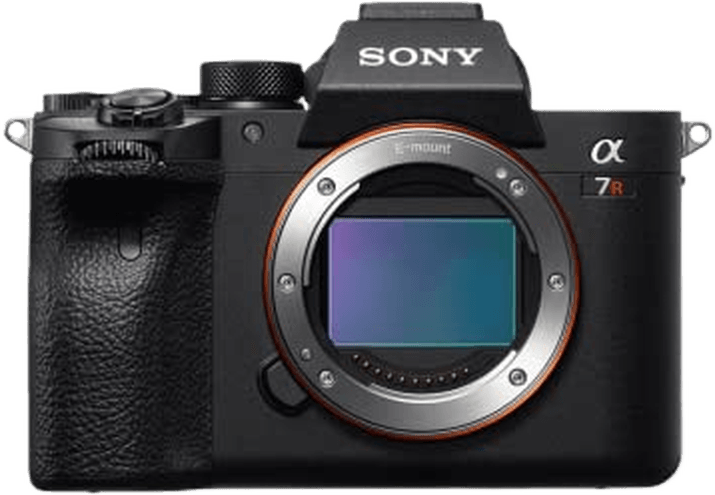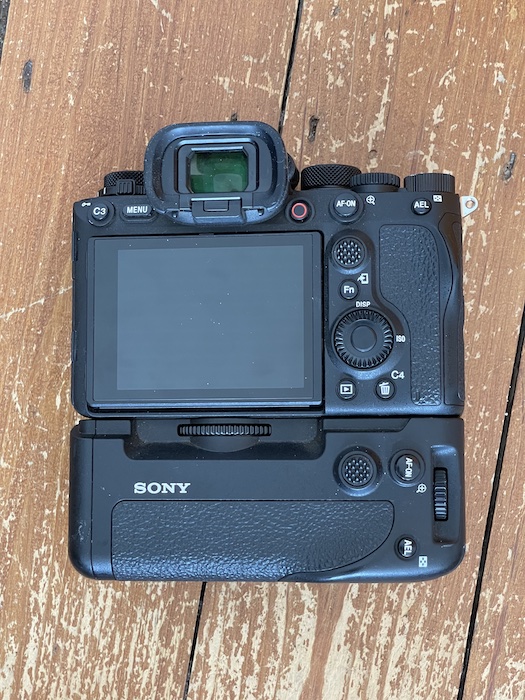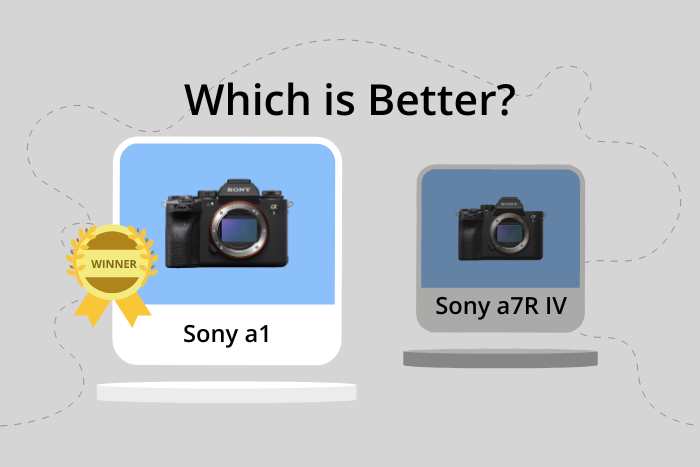Sony a1 vs a7R IV Comparison
Sony a1

Sony a7R IV

Sony a1 vs a7R IV Overview
Any Sony a1 vs a7RIV comparison will tell you it’s a trade-off. It will pit the a7R IV’s higher resolution and lower price against everything else the a1 has to offer. And I mean absolutely everything else!
I have a pair of Sony a1s. I’ve field tested them on trips to Canada, Antarctica, Kenya, and Botswana. And they haven’t really let me down.
But the a1’s autofocus has sometimes failed. And the images I’ve taken in difficult lighting conditions have also often been very soft.
In theory, the Sony a1 is the ultimate hybrid camera. You can shoot videos just as well as stills. It also offers a combination of continuous shooting speed and sensor size, that’s usually impossible.
The Sony a7R IV doesn’t come close to matching the a1’s advanced features. That includes the frame rate, autofocus system, viewfinder resolution, maximum flash sync speed, and video quality.
However, the Sony a7R IV’s sensor is 11 MP bigger. That means you can crop in much more with it.
And the a7R IV’s DxOMark sensor scores are also better in all three categories—color depth, dynamic range, and low-light ISO. Plus, it’s less than half the price! So, what camera should you buy?
Body and Handling
These cameras are almost identical in weight, dimensions, and handling. The Sony a1 is 2.5 oz (128 g) heavier, a millimeter taller, and three millimeters deeper. But none of those measurements is significant.
The main difference in handling is that the a1 has a drive mode dial. It lets you choose the frame rate and the autofocus mode.
However, you control these functions in the menu system of the Sony a7R IV. There’s no dial on the top plate.
It’s handy that the a1 automatically closes the mechanical shutter when you turn it off (unless it’s in silent shooting mode). That means there’s less chance of the sensor getting dust spots if you’re swapping lenses.
Apart from that, the other notable changes in the a1’s body are the following:
- A strengthened lens mount
- A new sliding lock for the battery compartment
- A slightly larger video record button
- A relocated proximity sensor that lets the camera switch automatically from the electronic viewfinder (EVF) to the LCD monitor

Sony a1 vs a7R IV Optics
The strength of the Sony a7R IV is its 61 MP sensor. This gives it a slight advantage over the a1 in every aspect of image quality.
We can first look at the Pixel Shift High-Resolution mode. This is a way of taking high-resolution images of static subjects by combining either 4 or 16 frames. This produces a whopping 241 MP image on the a7R IV or a 199 MP image on the a1.
However, size isn’t everything. The Sony a1 came out 18 months after the a7R IV. And we must frame the a1’s lower resolution against other technological improvements in the sensor.
For a start, the a1 sensor has a stacked design. This leads to a faster readout speed, higher maximum frame rate, a “blackout-free” viewfinder, and minimal rolling shutter effect with the electronic shutter.
The pixels on the Sony a1 are also slightly bigger, which reduces noise. And the minimum focus sensitivity is one stop better than on the Sony a7R IV (EV -4 vs EV -3). This gives the a1 an advantage in low-light performance.
Additionally, an infra-red sensor on the a1 improves white balance accuracy with fluorescent or tungsten lighting and LEDs.
The Sony a1’s 50 MP sensor is not that much smaller than the a7R IV’s sensor. And the a1’s overall DxO score (listed at the end) is only one point lower. Plus, the a1 scores highly on all other features offered.
- Larger pixels of 17.31 µm² vs 14.15 µm² (square micrometers)
- More phase detection AF points of 759 vs 567. (The a7R IV’s hybrid AF has an additional 425 contrast detection points to fine-tune focus.)
- Higher frame rate (30 fps vs 10 fps lossy compressed RAW with an electronic shutter rather than a mechanical shutter)
Plus, the a1 has gyroscopic stabilization (post stabilization option), anti-flicker mode, and a blackout-free viewfinder. But both cameras have face and eye AF tracking, AE bracketing, and five-axis sensor-shift image stabilization.
Sony a1 vs a7R IV Video Performance
Now, don’t get me wrong. Only being able to shoot 4K 30p video at 3840 x 2160 is not bad. It’s just that the Sony a7R IV has fallen behind some of the other leading mirrorless cameras on the market… including the a1.
The Sony a1’s highest video resolution is 7,680 x 4,320. And it can shoot the following:
- 4K at 120p in 10-bit (rather than 8-bit) for slow-motion videos
- 4.3K in 16-bit using an external recorder
- 8K at 30p
That’s mighty impressive. It also has S-cinetone, a popular shooting profile, and unlimited video recording.
Both cameras feature timelapse recording.
Sony a1 vs a7R IV Features and Benefits
When Sony engineers first sat down to design the a1, they refused to make any trade-offs. Everything had to be bigger, better, and faster. We see this in the long list of advantages over the a7R IV we’ve already discussed, plus the following:
- An anti-dust shutter mechanism
- Greater viewfinder magnification (0.9x vs 0.78x)
- Higher viewfinder resolution (9.4 million vs 5.7 million dots)
- A full-sized HDMI port
And the brightness, clarity, and sheer realism of the a1’s electronic viewfinder are astonishing. The EVF was so good when I tried mine out for the first time. I forgot I wasn’t looking through an optical viewfinder!
Having said that, the two cameras are made by the same manufacturer. That means they have a lot of features in common (as listed below), including the following:
- Wi-Fi and Bluetooth connectivity
- Microphone and headphone ports
- Smartphone remote control
- Webcam function
Sony a1 vs a7R IV Storage and Battery
When you design a high-performance camera like the Sony a1, you need memory cards that don’t slow it down. That’s why the a1 can take either the faster CFexpress Type A cards or SD cards in its two memory card slots. The Sony a7R IV can only take the slower SD cards.
In theory, you can do pretty much everything with an SD card (apart from shooting 8K video). But everything will slow down.
I used my a1 camera with an SD card once. And trying to shoot at 30 fps was like wading through molasses!
Having said that, the need for speed is not so great with the Sony a7R IV. That’s because you’ll only be taking pictures at a maximum continuous shooting speed of 10 fps.
Both cameras use the same NP-FZ100 battery. And you can buy battery grips to hold two of them if you need to.
The CIPA battery life ratings aren’t that impressive on paper for either the Sony a1 or the a7R IV (530 vs 670 shots). However, things are very different in the field.
I once took over 5,000 shots of little bee-eaters (birds) in Botswana. And I didn’t even use up my first battery!
That’s mostly because I was mostly shooting at 30 fps, which made a mockery of the official figures. And I’m sure it would be the same for the Sony a7R IV.
Sony a1 vs a7R IV – Our Verdict
Comparing the Sony a1 vs a7R IV is like comparing a fox to a hedgehog. In the words of Isaiah Berlin, “a fox knows many things, but a hedgehog knows one big thing.” The a7R IV’s “one big thing” is sensor size. But the a1 has a list of features as long as your arm!
The Sony a7R IV only beats the a1 on higher resolution (and DxO scores), longer battery life, weight, and the fact it has an NFC connection.
That means the a1 is a better camera than the a7R IV. But you still have to ask yourself whether you actually need all those features.
If you don’t shoot much video, you don’t need 8K. If you don’t take many action shots, you don’t need 30 fps. If you don’t often shoot when it’s dark, you don’t need the lower minimum focus sensitivity.
And then it all comes down to the price of the camera. If you have the budget and want the best possible kit, then fair enough, go ahead and buy the a1. However, if money is tight and you don’t think you’ll need all the extra features, you should be happy with a Sony a7R IV.

What Camera is Better Than the Sony a1?
If you want to play with the big boys, especially for wildlife or sports shooters, you really need one of the top three mirrorless cameras. That means a Nikon Z9, a Canon R5, or a Sony a1. They’ve set the benchmark for performance against DSLR cameras.
The Nikon Z9 has a slightly smaller sensor (46 MP) than the a1. It can only shoot at 20 fps in RAW. And it is almost twice the weight at 2 lbs 15 oz (1340 g)—albeit with a built-in battery grip.
However, it matches the a1’s video resolution (8K). And it offers a similarly rapid and accurate autofocus system with eye detection.
The Canon R5 has a slightly smaller sensor (45 MP) and a lower maximum frame rate (20 fps). However, it has a similar video resolution (8K). Plus, the Dual Pixel AF system is excellent, especially when shooting video.
If you can wait until it comes out, you might want to hold out for the new Canon flagship mirrorless camera, the c. It’s intended to replace the Canon EOS-1D X Mark III. It’s supposed to be a “jack of all trades and master of everything”!
It will have an 85 MP global shutter sensor, Quad Pixel AF, and 9 stops of in-body image stabilization (IBIS) improvement if you believe the rumors. It will also have a frame rate of 20 fps at full resolution and 40 fps when cropped at 21MP. Lastly, it will have 15.5 stops of dynamic range and an ISO max of 1.6 million!
Still not sure which camera is best for you? Our camera comparison tool can be useful for narrowing down your options. Check out some more popular camera comparisons for inspiration:

